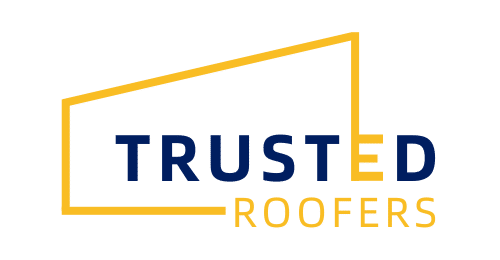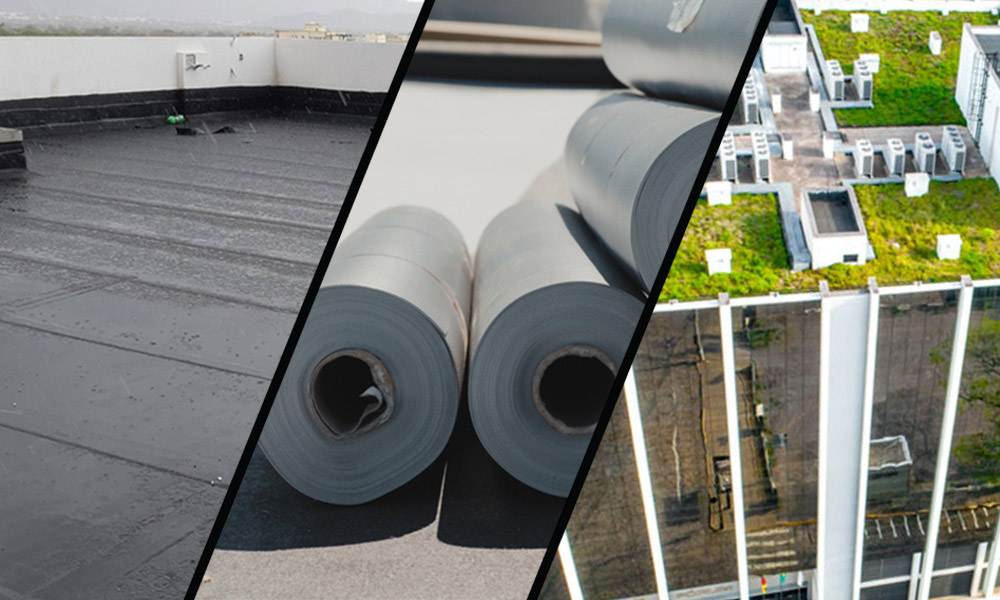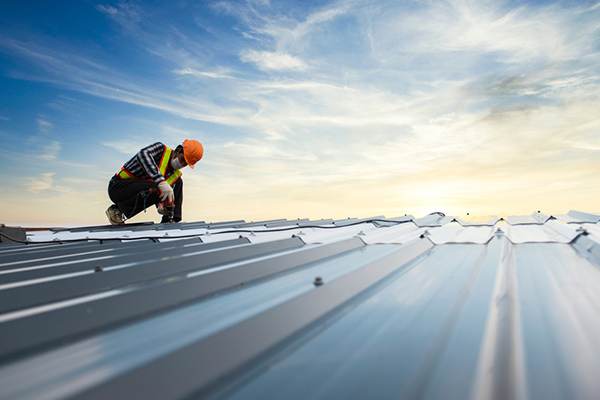Flat roofs have long been synonymous with commercial building design, offering a myriad of advantages, ranging from cost efficiency to design flexibility. When contemplating commercial structures, the choice of roof often goes beyond mere architectural aesthetics; it entails a balanced consideration of practicality, budget, and long-term sustainability.
Key Takeaways
- Built-Up Roof (BUR): Comprises alternating layers of bitumen and fabrics, with a gravel or stone top layer, offering durability and excellent waterproofing.
- Modified Bitumen Roof: Consists of plastic or rubber-modified bitumen, heat-applied, known for tear and puncture resistance.
- Rubber Membrane Roof (EPDM): Made from synthetic rubber, easy to repair, and highly durable, though vulnerable to punctures.
- Thermoplastic Olefin (TPO) Roof: A single-ply membrane known for resistance to tears, punctures, and mold, and is energy-efficient.
- Polyvinyl Chloride (PVC) Roof: Features two layers of PVC with polyester reinforcement, resistant to chemicals, fire, and water.
- Spray Polyurethane Foam (SPF) Roof: Liquid-sprayed foam offering insulation and waterproofing, but requires maintenance.
- Green or Vegetative Roof: Covered with plants, offering insulation and low maintenance, with stormwater runoff reduction benefits.
Types of Commercial Flat Roofs
Built-Up Roof (BUR)
Description & Materials: A built-up roof consists of alternating layers of bitumen (asphalt or coal tar) and reinforcing fabrics, culminating in a top layer of aggregate like gravel or stone.
Installation Method: It is installed by creating layers to build up the roof’s thickness.
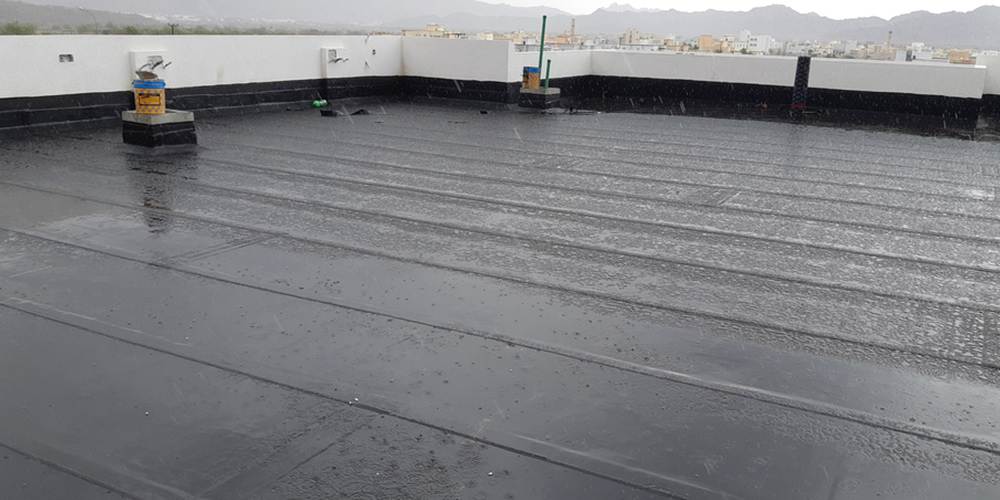
Modified Bitumen Roof
Description & Materials: It is composed of layers of bitumen (modified with plastic or rubber) and reinforced with polyester or fiberglass.
Installation Method: Typically applied using heat to seal seams, creating a continuous, waterproof membrane.
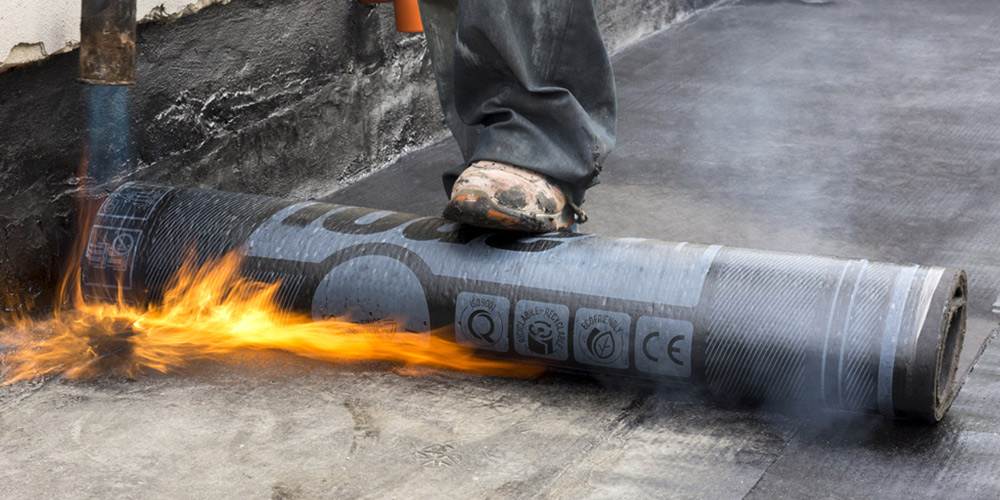
Rubber Membrane Roof (EPDM)
Description & Materials: Made from a synthetic rubber material primarily derived from oil and natural gas.
Installation Method: Attached with mechanical fasteners, adhered with adhesive, or ballasted with stone.
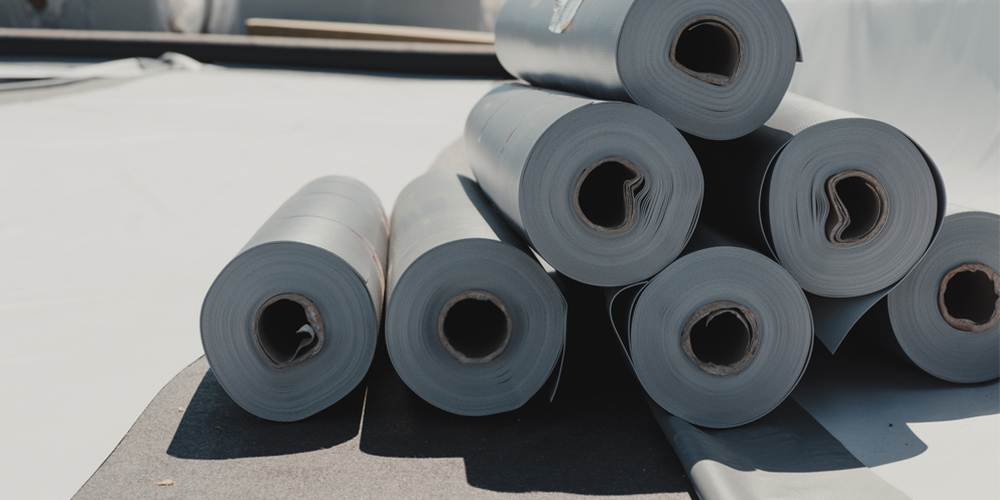
Thermoplastic Olefin (TPO) Roof
Description & Materials: TPO is a single-ply roofing membrane made from ethylene-propylene rubber.
Installation Method: Seams are heat-welded to form a watertight bond.
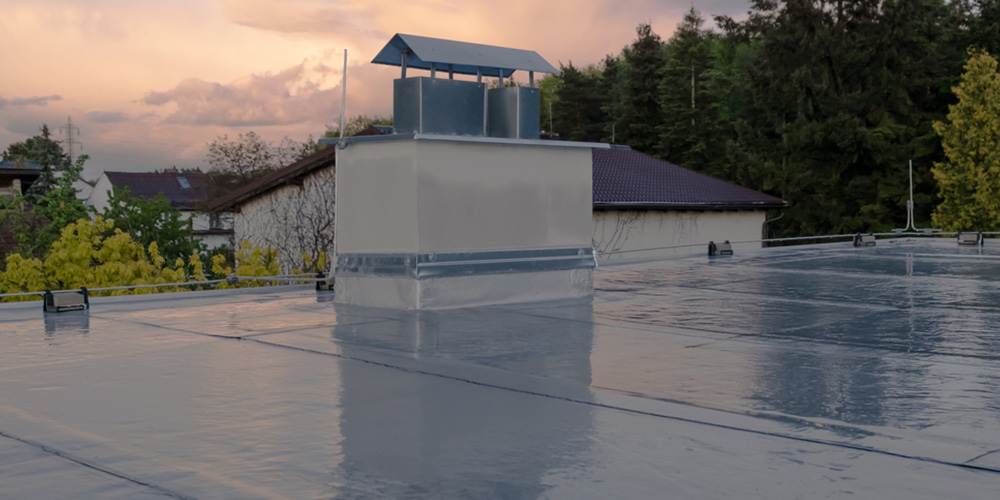
Polyvinyl Chloride (PVC) Roof
Description & Materials: PVC roofing is made from two layers of PVC roof material with polyester acting as a reinforcement between the layers.
Installation Method: The layers are adhered using hot air welding, creating a durable and long-lasting bond.
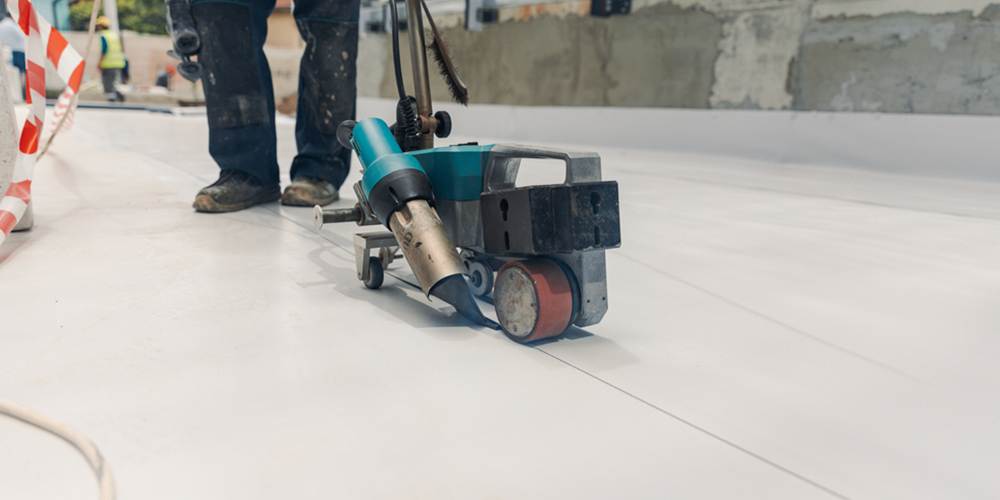
Spray Polyurethane Foam (SPF) Roof
Description: SPF is a material that is sprayed as a liquid, which expands into a foam, creating a solid layer across an existing roof.
Installation Method: Applied by spraying it directly on the existing roof, where it expands and solidifies into a hard foam.
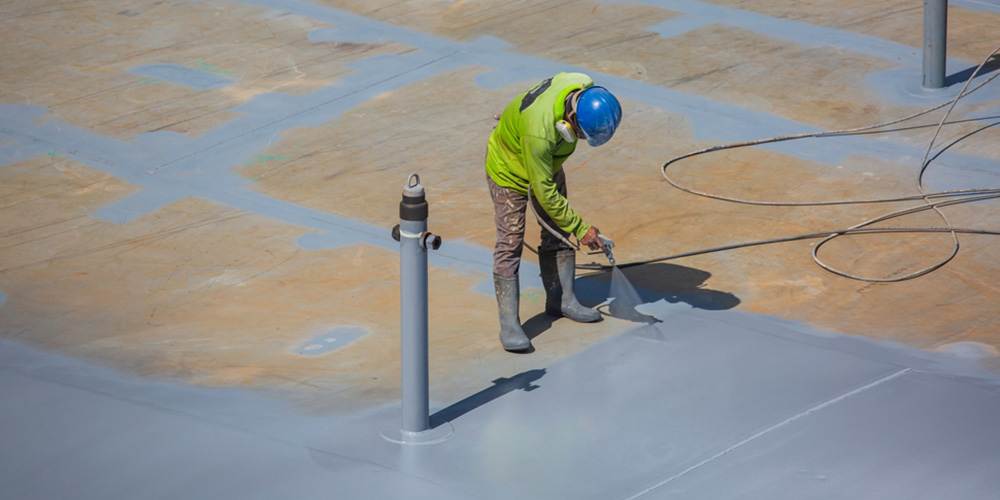
Green Or Vegetative Roof
Description & Materials: These roofs are covered with plants, which are planted over a waterproofing membrane.
Installation Method: Involves the installation of a high-quality waterproof membrane, a root barrier, a drainage system, and soil for the plants.

Pros and Cons of Each Type
| Type | Pros | Cons |
|---|---|---|
| Built-Up Roof (BUR) | – High durability – Low maintenance – UV resistant – Excellent waterproofing | – Heavyweight – Expensive installation – Longer installation time |
| Modified Bitumen Roof | – Resistant to tears, punctures, and traffic – Better flexibility in low temperatures | – Fire risk during installation – Less effective in ponding water |
| Rubber Membrane Roof (EPDM) | – Highly durable – Resistant to UV radiation and weathering – Easy to repair | – Vulnerable to punctures – Can be damaged by sunlight if not properly treated |
| Thermoplastic Olefin (TPO) | – Energy-efficient – Resistant to ozone – Algae-resistant | – Inconsistent formulation – Can be more expensive to install |
| Polyvinyl Chloride (PVC) | – Strong and versatile – Resistant to water, fire, and wind | – Can be expensive – Seams can become weak over time |
| Spray Polyurethane Foam (SPF) | – Provides insulation – Can be applied to various substrates – Excellent waterproofing | – Requires regular maintenance and recoating – Can be damaged by excess foot traffic |
| Green or Vegetative Roof | – Reduces stormwater runoff – Provides roof insulation – Enhances building’s appearance | – Expensive to install – Requires regular maintenance and irrigation |
Considerations for Choosing a Flat Roof Type
Climate: The geographical location and prevailing weather conditions significantly impact the choice, as some roofs perform better in specific climates.
Building Use: The purpose of the building can determine the load the roof must bear and influence the choice.
Budget: Installation and maintenance costs play a pivotal role in deciding the roofing type.
Local Building Codes: Regulations and standards may restrict or dictate the roofing materials used.
Aesthetic Preference: The appearance of the roof may be important, especially for brand-conscious commercial entities.
Energy Efficiency: The choice may be influenced by the roof’s ability to insulate and reflect, impacting energy costs.
Maintenance and Repair
Each roofing type has unique maintenance needs and repair complexities. Regular inspection and timely repairs are critical for longevity and performance. Some roofs may require more frequent monitoring due to susceptibility to damage and weathering, impacting long-term costs.
Costs
The initial installation costs, long-term maintenance, and repair expenses are crucial considerations. While some options may be cheaper initially, they may incur higher maintenance costs, affecting their overall cost-effectiveness. Talk to a commercial roofing contractor about your specific needs and situation and they can begin pricing up the different options for you.
Typical Use Cases for Each Commercial Roof Type
Large Manufacturing Facility
- Roof Type: Built-Up Roof (BUR)
- Background: A large manufacturing facility opted for a Built-Up Roof (BUR) due to its durability and reliability.
- Results: The multi-layer construction provided superior waterproofing and the facility has reported minimal maintenance needs, with no significant weather-related damages, showcasing BUR’s resilience and longevity.
Retail Complex
- Roof Type: Modified Bitumen Roof
- Background: A retail complex chose a Modified Bitumen Roof for its enhanced tensile strength.
- Results: The complex has experienced fewer leakages and damages during extreme weather conditions, highlighting the roof’s reliability and performance.
Office Building
- Roof Type: Rubber Membrane Roof (EPDM)
- Background: An office building installed a Rubber Membrane Roof (EPDM) due to its flexibility and UV resistance.
- Results: The building has benefited from reduced energy costs, and the roof has required fewer repairs, demonstrating EPDM’s energy efficiency and durability.
Commercial Shopping Mall
- Roof Type: Thermoplastic Olefin (TPO) Roof
- Background: A commercial shopping mall implemented a TPO roof for its reflectivity and energy efficiency.
- Results: The mall has reported a significant reduction in cooling costs during the summer months, proving the energy-saving benefits of TPO roofs.
Restaurant Chain
- Roof Type: Polyvinyl Chloride (PVC) Roof
- Background: A restaurant chain selected a PVC roof for its chemical resistance and durability.
- Results: The PVC roof has withstood the emissions from the kitchen’s exhaust systems, illustrating its resilience to chemical exposure.
Agricultural Storage Facility
- Roof Type: Spray Polyurethane Foam (SPF) Roof
- Background: An agricultural storage facility applied an SPF roof for its excellent insulation properties and seamless waterproofing.
- Results: The facility has maintained optimal inside temperatures with lesser energy expenditure, signifying SPF’s insulative effectiveness.
Urban Corporate Office
- Roof Type: Green Roof
- Background: An urban corporate office chose a green roof to enhance the building’s sustainability and aesthetics.
- Results: The green roof has improved the building’s energy efficiency, reduced stormwater runoff, and provided a recreational space for employees, underscoring the multifunctional advantages of green roofs.
Conclusion
In conclusion, the advent of flat roofs has revolutionized commercial building design, marrying functionality with aesthetic versatility. The various commercial roofing types available are a testiment to the size of the industry where there are multiple options to cater each project’s individual needs. Due to there being so many different types it is best to speak to a commercial roofing expert to ensure you understand all the pros and cons of each type before you make a decision.
Frequently Asked Questions
What are the most common types of commercial flat roofs?
Common types include Built-Up Roofing (BUR), Modified Bitumen Roofing, Thermoset (EPDM) Roof System, Thermoplastic (PVC & TPO) Roof System, and Metal Roofs.
How long does a typical commercial flat roof last?
Lifespan varies by type: BUR can last 15-30 years, Modified Bitumen around 20 years, EPDM 20-35 years, PVC & TPO 15-30 years, and Metal Roofs 30-45 years.
What is the most cost-effective commercial flat roof material?
EPDM (rubber roofing) is generally the most cost-effective due to its balance of affordability and durability.
